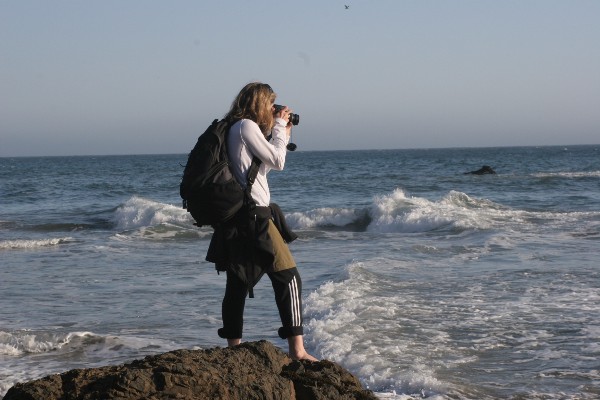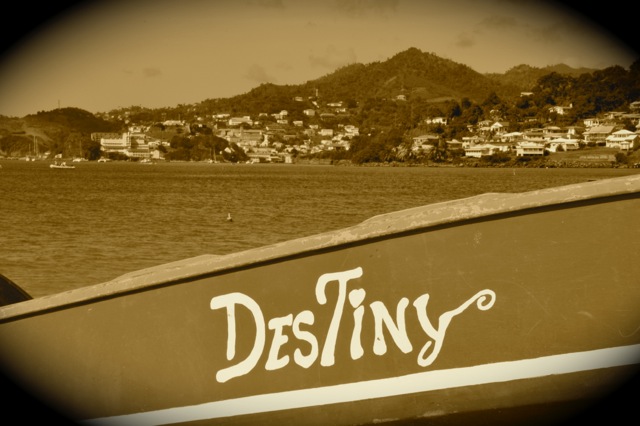Can you take half a year off from your job?
The vast majority of working people automatically answer by saying that they can’t afford it. Relying on salary and living from one paycheck to the next, the loss of income may be financially devastating. The idea that we can’t afford it gets reinforced as soon as we sign up for a mortgage or bring offspring into the world. These represent semi-permanent, burdensome financial obligations which may not be compromised or even put at risk. Too much is at stake. The severity of the burden is paralyzing, or at least blinding.
I can testify to being blind myself, up until the day I decided to create a financial plan.
But how? I know more or less how much money my family spends on a short sailing vacation in the Mediterranean Sea. But this time we wanted more – a six-month sabbatical in the Caribbean.
Surely we can’t afford that, right?

Many people live under such limiting assumptions, not even pausing to ask themselves: How much does my dream actually cost?
I log into my online banking and export all our expenses for a twelve-month period to an Excel file. I have about 1400 individual expense lines out of my checking account. One by one I sort them into categories: household, cars, vacations, media, kids, food, taxes, etc. I add some subcategories according to where the money was spent: gas stations, department stores, supermarkets, hardware stores, restaurants, hair salons, garden centers, etc. After a few hours of sorting, I discover for the first time our family’s financial profile.
Under the bottom line expenses of each category in the past twelve months, I create two additional lines: one for the next twelve months, and another for a sabbatical sailing trip.
This is our budget plan.
I spend the next few hours trying to estimate future expenses, giving some thoughts to the various categories. Most of our expenses at home would probably stay at the same level in the next twelve months or increase slightly.
During a sailing trip, however, we can expect significant changes:
- We avoid any expenses for car maintenance, car insurance, and gas stations.
- We don’t need to buy any furniture or pay for music classes.
- We don’t worry about heating the house and electricity bills.
- In any sailing destination we choose, food in supermarkets would most likely be cheaper than it is at home, although we might want to eat out more often.
- Health insurance requires additional coverage and higher cost. I increase the health category for doctor visits and pharmacies as well, because I can’t rely on the health insurance to refund medical bills promptly while we’re away.
- I increase our budget for books and communications, just to make sure we would have sufficient reading materials at all times and that we stayed in touch under all circumstances.
- The category Vacations is certainly unnecessary while sailing, and also prior to it. I replace it with airfare to get to the base marina, as well as marina charges and entrance fees to tourist sites.
- We can forecast significant savings for taxes due to the loss of income during the trip.
- For the yacht I reserve a generous amount, to cover either renting or a buy-sell deal.
- For our variable mortgage I budget extra, for the unlikely event of increasing interest rates.
- Shall we rent out our home during our absence? I play with this thought, although I don’t count on it and leave an empty line for it in my calculations.
Once satisfied with the estimations, I add a bit of reserve for some of the categories as well as one line for additional unexpected expenses.
When the exercise is completed, I call my wife, Laura: “Look at that! Isn’t it amazing?!”
“What do you see?” she asks, her eyes scan the cloud of numbers on the laptop screen and go blank.
I check the Excel formulas again to verify that all rows are properly accounted for.
“At the bottom line,” I say, “living on a boat is slightly cheaper than living at home.”
“How is that possible?” Laura asks in disbelief.
I show her all the expenses we avoid by not living at home. We laugh at the idea that we can actually save money by sailing on a yacht. It reminds me of the story of an old lady who decided to spend the rest of her life on a fancy cruise ship instead of moving into a home for the aged. She enjoys first class service, first class food, travel and entertainment included, and it’s the cheaper option!
Of course, we don’t want to wait for retirement, so we still need to save enough money to account for the loss of income during our trip. So I open a savings account and do the simple math: a sixth of our income has to be parked there every month for three years in order to compensate for half a year away.
Or even better: a quarter of our income each month for the next two years. I wonder whether we can reduce our running expenses so dramatically. I create a standing order for the savings account to start filling up. At this point in time, the idea of a sabbatical is still vague, and there are no concrete plans to speak of. We have no starting date, no chosen destination, and no confidence that it would actually come true. The financial plan and the savings account stand by just in case we ever decide to go for it.
Our capitalist world is full of temptations: a trendy mobile phone, a fancy restaurant, a fluffy winter jacket…the list is endless. Sometimes we resist, and sometimes we don’t. One of our weaknesses as imperfect human beings is that we tend to opt for the quick, certain reward. As a result, long-term uncertain goals fall behind.
Even with above-average income, our budget is limited and our choices hard. I sometimes have to ask myself: What do I really want to achieve in the next two or three years? Do I want to have a comfortable life? Is my goal to buy food and clothes without thinking twice? Shall I choose the higher hotel category for the weekend in the mountains? OR do I want to fulfill my dreams? I would feel awful if those daily temptations prevented me from realizing the big plans.
Imagining my life in retrospective sometimes helps me clear my thoughts. If an old friend meets me after a “long time no see” and asks me, “How is it going?” would I rather answer:
1. “Great! Check out my new gadget and my wellness package!”
Or would I rather say:
2. “I took my family sailing around the Caribbean.”
Resisting the temptations is easier with a specific goal in mind. New designer shoes or a night out suddenly seem less essential when you realize that the same amount of money can finance a train ticket or accommodations at your dream destination. Frankly, in my own opinion, taking my family sailing for six months is the best thing I can do with my money.
Other ways to save money

Reducing expenses is just one way to save money. Increasing the income is another viable option. For example, our savings account is boosted by additional funds when we decide to auction stuff online and at the same time liberate precious cellar space from the burden of old relics like an empty aquarium, a fitness machine, a baby bed, gardening equipment, and many other items.
When a neighbor tells me about his challenges in keeping up with his fast-growing business, I offer to help him with my expertise as coach and business consultant. Informal conversations soon evolve to a formal engagement and additional income on the side.
The months go by, and our sabbatical savings account grows steadily. By the time we leave home we already know that we have sufficient funds plus reserves. The yacht charter was less expensive than we had anticipated, and Laura found cheap flights to Fort de France, Martinique. We managed to rent out our house for a fair price.
Still, I want to keep track of our spending. Laura and I agree on a weekly budget and aim to keep our total expenses below it. After exiting each island, and at the end of every month, I add up our expenses and brief the family crew: “Tobago is our cheapest island so far. There was nothing to spend money on: no marinas, no car rental, no fancy restaurants, and only basic supermarkets. It compensates for Grenada, where we rented a jeep, purchased deep sea fishing gear, and had dinner out almost every evening.”
As the trip progresses, I notice that we manage without special efforts to keep our expenses below the intended budget:
- Ground transportation: With time on our hands and the ambition to mingle with local islanders, we take every opportunity to hop on a bus, walk, or hitchhike.
- We stay away from marinas because we like our peace and our morning swim in pristine waters. Out of 196 nights on the yacht, we only pay for two overnights in marinas.
- We hardly ever use the diesel engines for more than anchoring maneuvers or navigating dangerous shallows. We log 2840 nautical miles and only fill up the diesel tank three times. Wind power in the Caribbean is quite reliable and costs nothing.
- The five t-shirts plus two swimming suits we brought in our luggage are sufficient for the entire trip. Buying clothes is limited to birthday presents or a single souvenir. We do our own laundry by hand.
- With the exception of one Dutch bookstore in Curaçao, we purchase e-books online for a fraction of their shelf prices, or exchange paper books for free with other sailors and at the book corners of yacht clubs.
- Communications with relatives and friends cost virtually nothing because we find free WiFi almost every day.
By the time we reach the British Virgin Islands, about halfway through our trip, I look at the expenses list and announce: “Going forward, we can afford to eat in restaurants almost every day.”
“Yes! More WiFi!” My daughter cheers.
“If you ask me,” says my Dad, “my favorite restaurant by far and without competition is our own cockpit. It serves delicious food, including the freshest fish, bread and tropical fruit.”
“And we always get the best table at the waterfront,” I add.
“Including romantic views of the sunset,” says Laura.
We also prefer to drop anchor in secluded bays where shopping opportunities are absent. Some yachties look for stylish beach bars or the comfort of docking. We look for serenity, natural beauty and a short swimming range to the coral reef.
The most beautiful things in life come free of charge.
A global citizen, Tomer Lanis has been working and traveling in 78 countries in the past 24 years. Following his six-month sailing sabbatical in the Caribbean, he recently published a book – You Can Take Six Months Off – demonstrating how anyone can, and why everyone should.
Photos courtesy of the author and may not be used without permission.








 Beth Fenger took off on her own in February of 2013 for her round the world trip, visiting Patagonia, Cambodia, Mongolia, India, Turkey, Jordan, and Namibia. She’s also an amateur photographer, zealous wine taster, obsessive trail runner, avid camper, adrenaline junkie, and finds her current career calling in the non-profit sector. She can be found toting her camera, tent, and corkscrew, while running trails in various US cities and on
Beth Fenger took off on her own in February of 2013 for her round the world trip, visiting Patagonia, Cambodia, Mongolia, India, Turkey, Jordan, and Namibia. She’s also an amateur photographer, zealous wine taster, obsessive trail runner, avid camper, adrenaline junkie, and finds her current career calling in the non-profit sector. She can be found toting her camera, tent, and corkscrew, while running trails in various US cities and on 





















